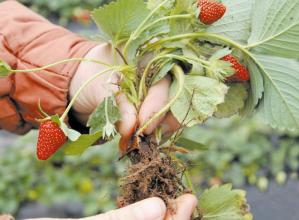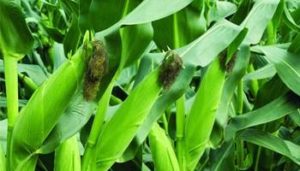How to Use A Combination of Different Fertilizers
Agricultural conveyor belt machine Twin screw extruder fertilizer machinery Fertilizer materials handling machine
1. Ammonium and urea can not be mixed. Ammonia nitrogen in urea can not be absorbed by crops, it only can be absorbed by crops when it under the action of gland enzyme, converted to ammonium nitrogen; After carbon iron be applied into the soil, the soil will be acidic in short-term which will  accelerate the loss of nitrogen in urea. Therefore, the urea and carbon iron can not be mixed. Ammonium can not be mixed with the bacteria fertilizer, because the former will distribute a certain concentration of ammonia, the latter’s active bacteria have toxic effects, which will make fertilizer lose effect.
accelerate the loss of nitrogen in urea. Therefore, the urea and carbon iron can not be mixed. Ammonium can not be mixed with the bacteria fertilizer, because the former will distribute a certain concentration of ammonia, the latter’s active bacteria have toxic effects, which will make fertilizer lose effect.
- Acidic fertilizer can not be mixed with alkaline fertilizer. Ammonium, ammonium sulfate, ammonium nitrate, ammonium phosphate can not be mixed with grass ash, lime, kiln ash and other alkaline fertilizer, because acidic fertilizer and alkaline fertilizer will have chemicalreactionso that result in nitrogen loss and reduce fertilizer efficiency.
- Nitrogen compound fertilizer should not be applied to leguminous crops. Soybean, mung bean, peanut and other legumes have nitrogen fixation rhizobia, excessive application of nitrogenous compound fertilizer, not only cause waste, but also inhibit rhizobia activityand reduce its nitrogen fixation capacity.
- Nitrate nitrogen fertilizer in the paddy field. the nitrate ionswill be dissociated from ammonium nitrate, sodium nitrateand penetrated into the paddy field so that resulting in denitrification and loss of nitrogen; Before or after the heavy rain day, we should not apply nitrate nitrogen in dry land.
- we should not use too much ammonium sulfate, ammonium sulfate is the physiological acidic fertilizer, long-term application in the same soil, will increase its acidity, destructaggregate structure; in alkaline soil,ammonium ions of ammonium sulfate are absorbed, and acid ions remain in the soil will have chemical reaction with calcium, so that lead to the soil hard.
- Ammonium should not be applied shallowly, it should be applied to the place deep in the 6 cm and covered with soil immediately. It should not be used in the greenhouse because carbon and ammonium commonly known as gas fertilizer, which easily decomposed into ammonia in the greenhouse and volatile, resulting in waste; and when the ammonia concentration is too large, it will burns crop leaves.
- Potash fertilizer should not be applied
 as topdressing fertilizerin the late period of plant growth. Potassium can be reused when it transferred from the lower part of the crop stem and leaf to the top of the delicate part. The symptom of lack potassium will be later than the lack of nitrogen, the potash fertilizer should be applied in one time, or topdressing in the seedling stage.
as topdressing fertilizerin the late period of plant growth. Potassium can be reused when it transferred from the lower part of the crop stem and leaf to the top of the delicate part. The symptom of lack potassium will be later than the lack of nitrogen, the potash fertilizer should be applied in one time, or topdressing in the seedling stage. - Chlorine-containing fertilizers such as potassium, ammonium chlorideshould not be applied in saline soil andavoid chlorine crops. Chlorine ions in the chlorine fertilizer will accumulate in the soil, leading to soil acidification. Chlorine fertilizer applied in saline soil will increase salt damage; applying the chlorine in the avoid crops will affect the yield and quality of crops.
- After the application of urea, we should not water immediately. Apply urea into the soil, it will convert into amide which is easy loss with water. In addition, we should not apply urea before or after heavy rain and covered soil after fertilization is good for improving fertilizer effect. Moreover, the phosphate fertilizer application should be concentrated, not sprinkle, to prevent fixed. The best way for urea application is ditch facilities and the urea should be applied near the root. The artile is quoted from: http://www.fert.cn/news/2017/08/17/165807333927.shtml Previous: Autumn Fertilization is Good or Bad
Next: Organic Matters to Soil
